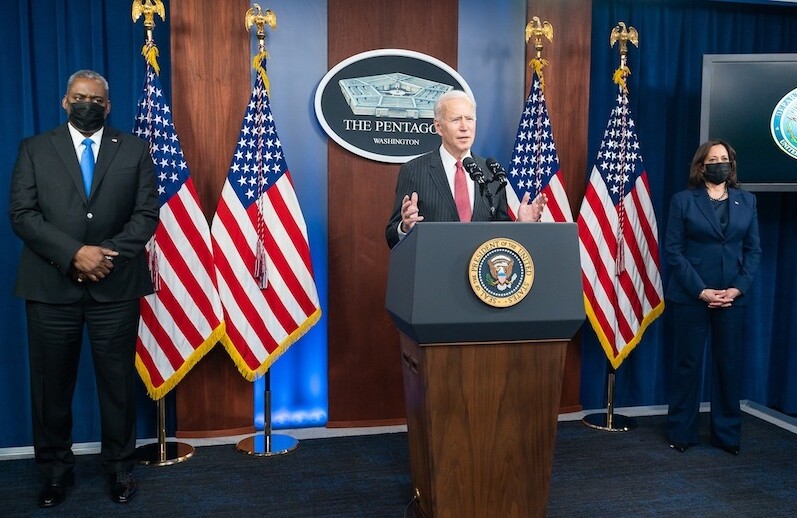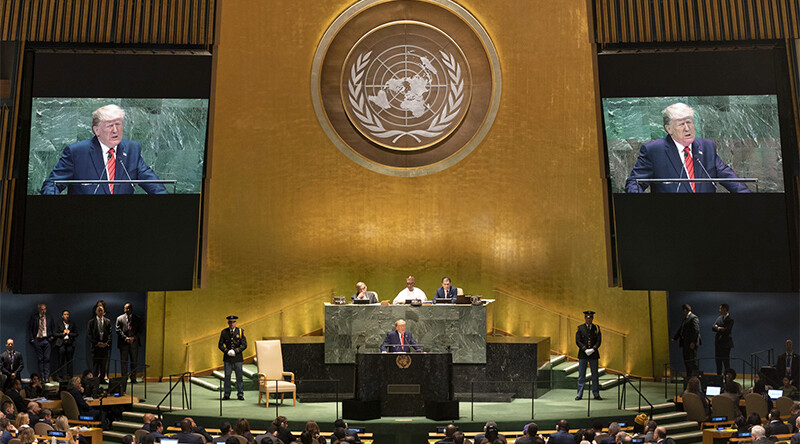As we await the release of the National Security Strategy of the Biden/Harris administration, an assessment of the birth pangs at the creation—looking at the challenges in formulating a new narrative for U.S. global engagement in the changed conditions of the 2020s.
The 2020 presidential election offered voters candidates who had very different visions of the role the United States should play in the world. The Trump/Pence team ran on the record of its transactional internationalism (“America First”). In contrast, in its campaign rhetoric, the Biden/Harris team stressed the imperative of restoring American global leadership (“America is Back”) but acknowledged the importance of connecting U.S. foreign policy to a domestic doorstep/pocketbook agenda.
Yet, since taking office, in its strategic documents, policy speeches, budget proposals, personnel selections, and legislative agenda, the Biden/Harris administration has toggled between four different organizing principles for U.S. foreign policy.
1. Domestic rejuvenation and reconstruction (“A Foreign Policy for the Middle Class”): an approach that focuses on rebuilding the sources of American technological and economic predominance and subordinating foreign policy to these considerations.
2. Climate statecraft: making efforts to combat the environmental impacts of climate change and to develop next-generation technologies the focal point of America’s overseas relationships.
3. Competing with China (“Strategic Competition") and a pivot to the Indo-Pacific as the main area of interest, with containment of China’s ability to project economic and military power in ways hostile to U.S. interests the leading priority.
4. Forging a community of democratic nations, especially decoupling from the major authoritarian powers to reorient economic and trade ties among the democracies of the Euro-Atlantic and Indo-Pacific basins.
The administration struggles with how to prioritize between these different principles when faced with contradictory impulses. In 2021, for instance, was getting Chinese cooperation on climate change a higher priority than responding to Beijing’s actions in Xinjiang and Hong Kong? Was the role of Russian natural gas (and possibly next-generation hydrogen) more important than addressing its actions in Ukraine (prior to the 2022 invasion)? To contain China, should the U.S. entertain certain geopolitical concessions to Putin? Should major free-trade pacts with the democratic states of the Asia-Pacific take greater priority over strengthening domestic procurement? In charting these tensions, Politico’s Nahal Toosi concluded an “omnipolicy” approach (collapsing siloed policy areas such as energy, trade, health, and security) does not provide sufficient guidance.
Paul Saunders has observed: "Each of these narratives are visible in U.S. domestic debates surrounding foreign policy, with some stronger/weaker than others and no dominant approach. Neither the administration nor external thinkers/advocates have managed to develop a compelling narrative based on one of these approaches or on integrating two or more of them." The inability to mobilize and sustain a broad domestic consensus around a particular vision for U.S. global engagement makes it more difficult for necessary steps, including the passage of enabling legislation, to move forward.
The 2022 Russian invasion of Ukraine has added an unexpected factor in determining American foreign policy priorities and in developing a coherent narrative—by providing a possible path forward to take elements of the different approaches to set priorities. For instance, since February 2022, and the imposition of sanctions on Russia, we have seen the emergence of what we have termed "climate geopolitics”: reducing dependence on Russian natural resources for fueling Western economies, which can spur domestic technological innovation and also spur movement towards a green energy revolution while giving new purpose to Cold War alliances that move beyond military cooperation towards closer technological and economic relationships. In this framing, American global engagement is thus tied to making concrete gains for the U.S. worker in pursuing development of the technologies of the Fourth Industrial Revolution while strengthening partnerships across both the Atlantic and Pacific.
Is this the direction that will be enshrined in the new National Security Strategy? After its release, we can compare and contrast these findings with the guidance the Biden/Harris team has provided.




